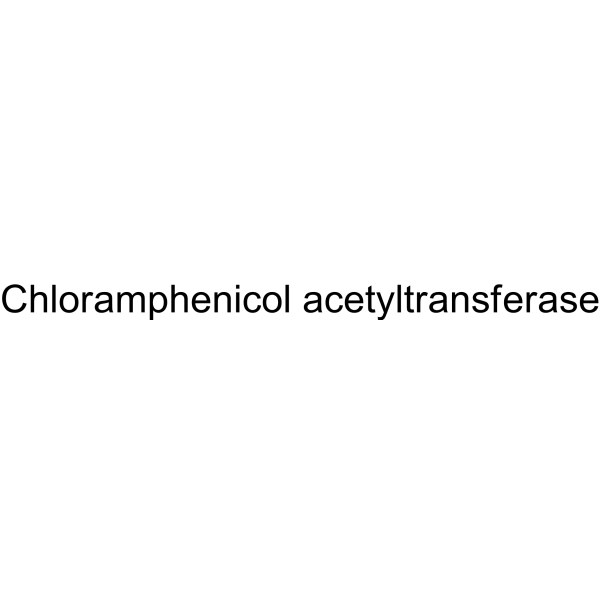Chloramphenicol acetyltransferase

Chloramphenicol acetyltransferase结构式

|
常用名 | Chloramphenicol acetyltransferase | 英文名 | Chloramphenicol acetyltransferase |
|---|---|---|---|---|
| CAS号 | 9040-07-7 | 分子量 | 323.12938 | |
| 密度 | N/A | 沸点 | N/A | |
| 分子式 | C11H12Cl2N2O5 | 熔点 | N/A | |
| MSDS | 美版 | 闪点 | N/A |
|
Improving cell-free protein synthesis through genome engineering of Escherichia coli lacking release factor 1.
ChemBioChem. 16(5) , 844-53, (2015) Site-specific incorporation of non-standard amino acids (NSAAs) into proteins opens the way to novel biological insights and applications in biotechnology. Here, we describe the development of a high yielding cell-free protein synthesis (CFPS) platform for NS... |
|
|
The innate growth bistability and fitness landscapes of antibiotic-resistant bacteria.
Science 342(6162) , 1237435, (2013) To predict the emergence of antibiotic resistance, quantitative relations must be established between the fitness of drug-resistant organisms and the molecular mechanisms conferring resistance. These relations are often unknown and may depend on the state of ... |
|
|
Sigma factor RpoS controls alkylresorcinol synthesis through ArpR, a LysR-type regulatory protein, during encystment of Azotobacter vinelandii.
J. Bacteriol. 195(8) , 1834-44, (2013) Azotobacter vinelandii is a bacterium which undergoes a differentiation process leading to the formation of metabolically dormant cysts. During the encystment process, A. vinelandii produces alkylresorcinol lipids (ARs) that replace the membrane phospholipids... |
|
|
Selection of scFv phages specific for chloramphenicol acetyl transferase (CAT), as alternatives for antibodies in CAT detection assays.
J. Appl. Toxicol. 32(10) , 783-9, (2012) Reporter gene assays are commonly used in applied toxicology to measure the transcription of genes involved in toxic responses. In these reporter gene assays, transgenic cells are used, which contain a promoter-operator region of a gene of interest fused to a... |
|
|
Xer-cise in Helicobacter pylori: one-step transformation for the construction of markerless gene deletions.
Helicobacter 17(6) , 435-43, (2012) Xer-cise is an efficient selectable marker removal technique that was first applied in Bacillus subtilis and Escherichia coli for the construction of markerless gene deletions. Xer-cise marker excision takes advantage of the presence of site-specific Xer reco... |
|
|
Polymerase chain reaction coupling with magnetic nanoparticles-based biotin-avidin system for amplification of chemiluminescent detection signals of nucleic acid.
J. Nanosci. Nanotechnol. 11(2) , 1074-8, (2011) A novel method was established through the detection of chemiluminescent signals of nucleic acid hybridization based on magnetic nanoparticles (MNPs) and PCR. 5' amino- modified specific probes were immobilized on the surface of silanized MNPs by Schiff react... |
|
|
Characterization of a cryptic plasmid pSM429 and its application for heterologous expression in psychrophilic Pseudoalteromonas.
Microb. Cell Fact. 10 , 30, (2011) Pseudoalteromonas is an important genus widespread in marine environment, and a lot of psychrophilic Pseudoalteromonas strains thrive in deep sea and polar sea. By now, there are only a few genetic systems for Pseudoalteromonas reported and no commercial Pseu... |
|
|
Trans-splicing with the group I intron ribozyme from Azoarcus.
RNA 20(2) , 202-13, (2014) Group I introns are ribozymes (catalytic RNAs) that excise themselves from RNA primary transcripts by catalyzing two successive transesterification reactions. These cis-splicing ribozymes can be converted into trans-splicing ribozymes, which can modify the se... |
|
|
Loss of NRF2 impairs gastric nitrergic stimulation and function.
Free Radic. Biol. Med. 51(3) , 619-25, (2011) Emerging research suggests that antioxidant gene expression has the potential to suppress the development of gastroparesis. However, direct genetic evidence that definitively supports this concept is lacking. We used mice carrying a targeted disruption of Nfe... |
|
|
Abrogation of contaminating RNA activity in HIV-1 Gag VLPs.
Virol. J. 8 , 462, (2011) HIV-1 Gag virus like particles (VLPs) used as candidate vaccines are regarded as inert particles as they contain no replicative nucleic acid, although they do encapsidate cellular RNAs. During HIV-1 Gag VLP production in baculovirus-based expression systems, ... |